Macbeth 2020
Tuesday, April 21st, 2020What if the events of Macbeth had taken place in 2020, and the witches were forced to hold their fateful meeting online? It just might look a little something like this:
What if the events of Macbeth had taken place in 2020, and the witches were forced to hold their fateful meeting online? It just might look a little something like this:
After a six-year hiatus, Pic Tac Toe is back — rested and ready!
In a Pic Tac Toe puzzle, there are nine pictures in a three-by-three grid, like Tic-Tac-Toe. In each row, column, and diagonal, there is a common theme that unites the three pictures. The challenge is to find the eight themes.
You can click on each image to see the image source, which may help with identification.
Please post whatever you come up with in the comments section.
Enjoy!
UPDATE: All eight correct themes provided by Jeff. See comments for all correct themes.
Happy 455th Birthday to Shakespeare!
In honor of the occasion, I present… Shakespeare Memes!
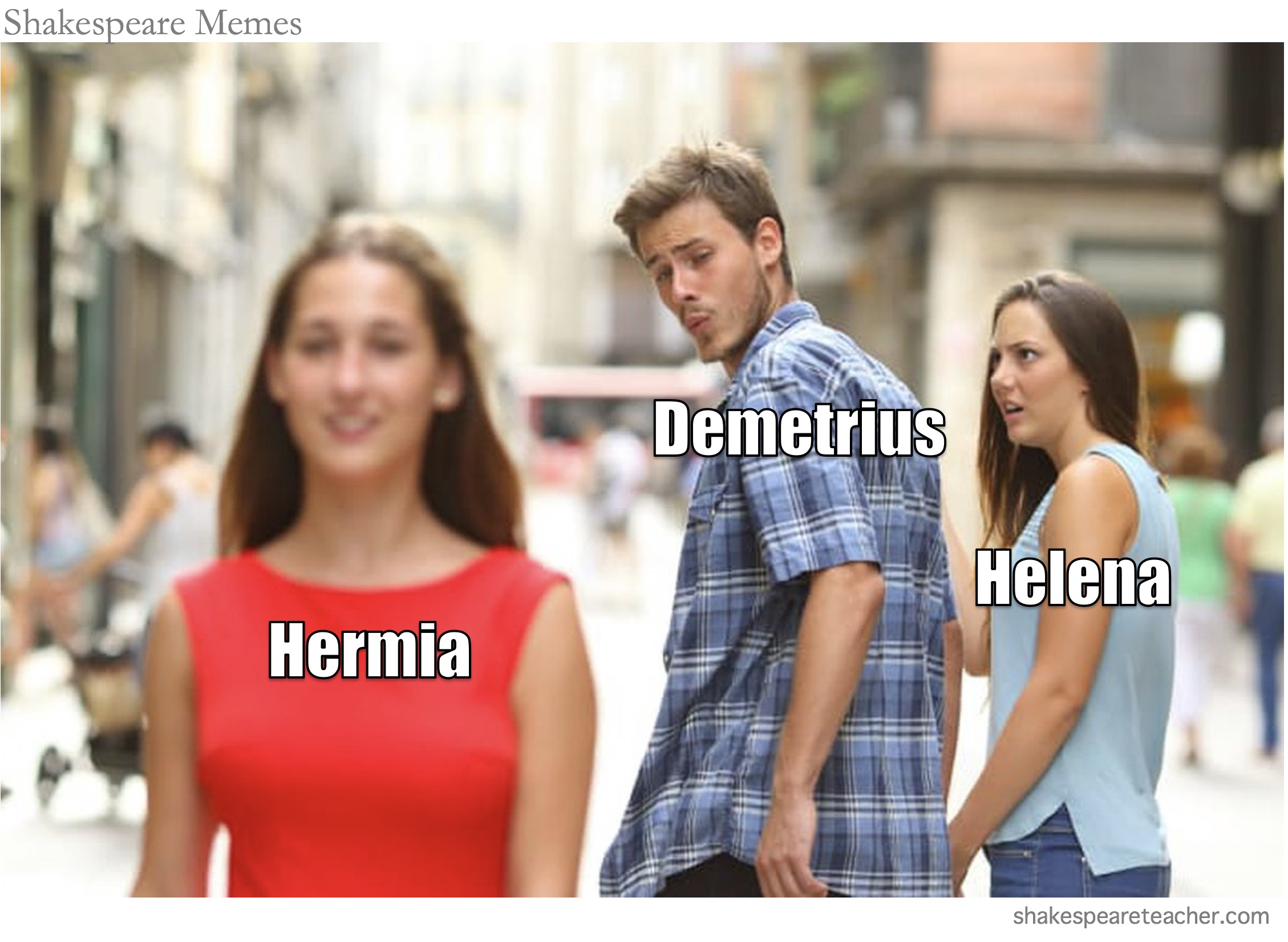

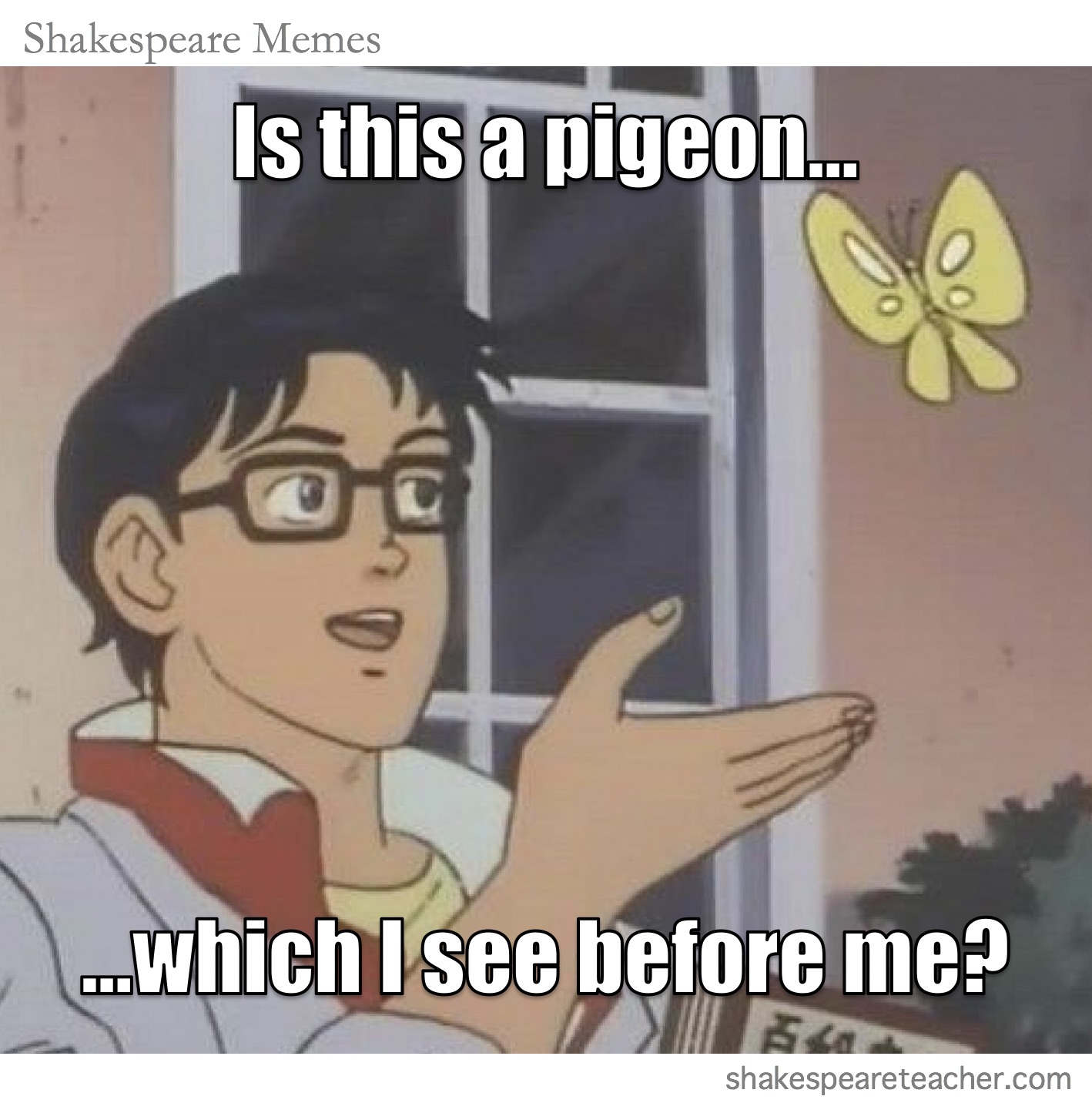

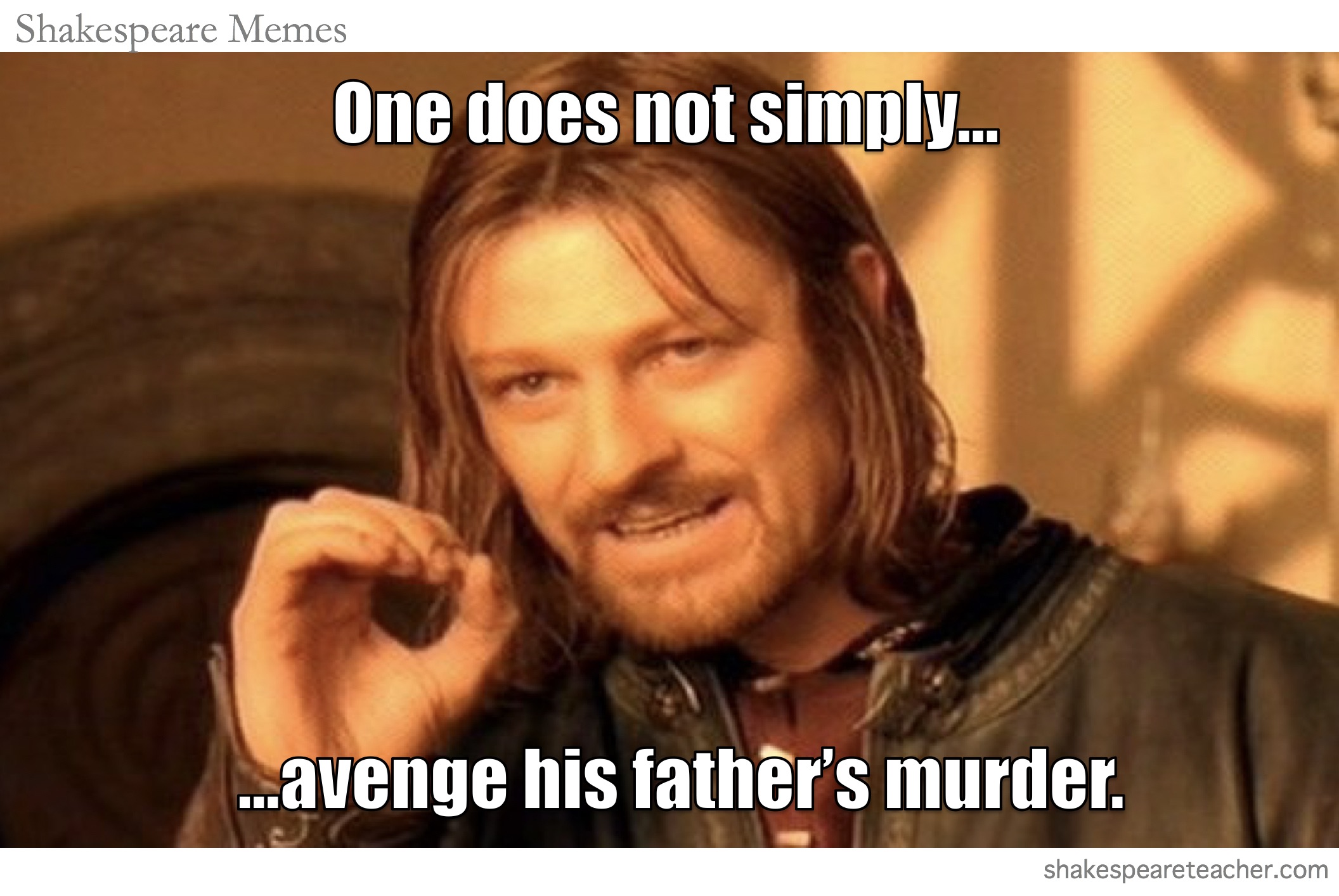
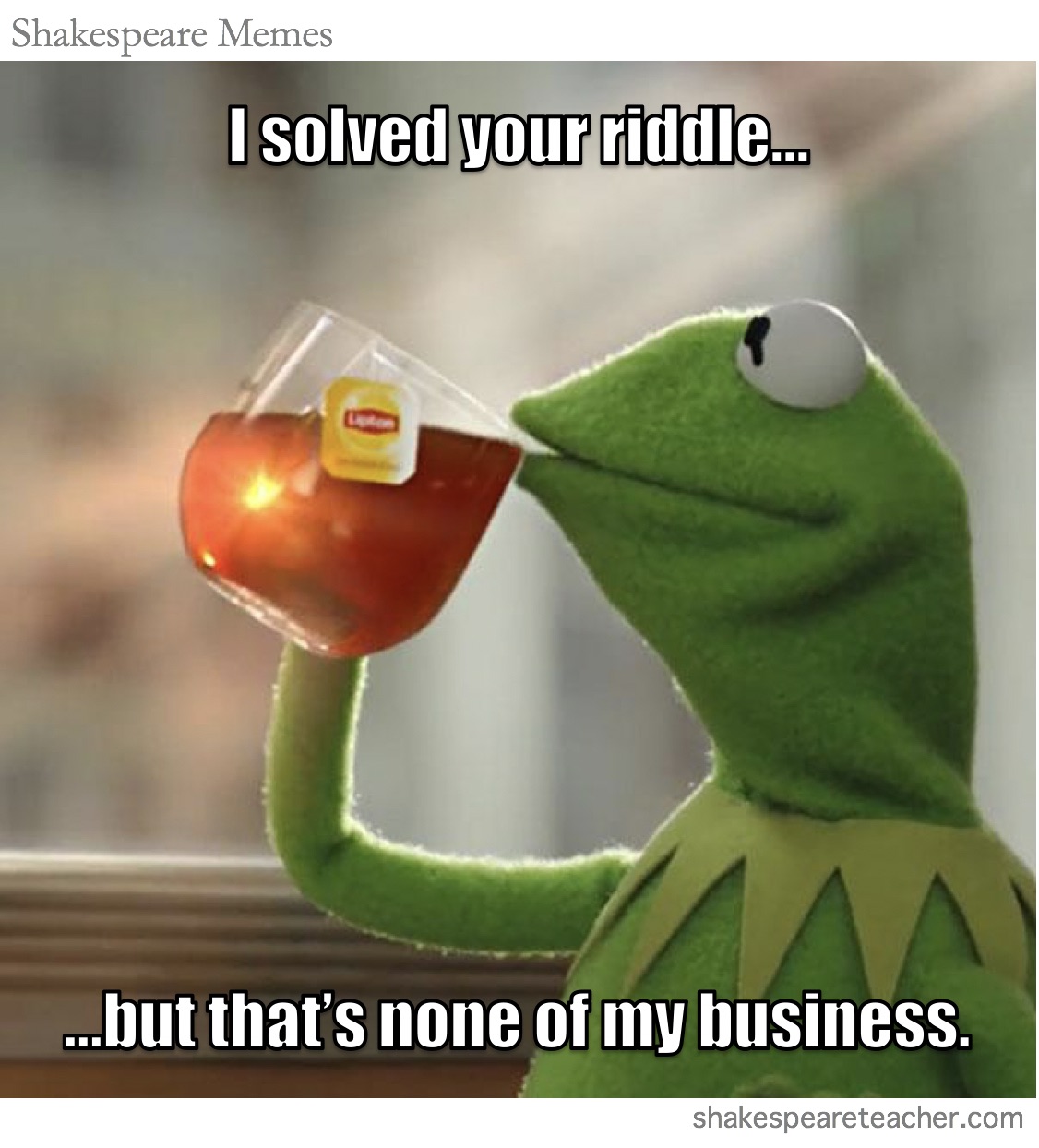

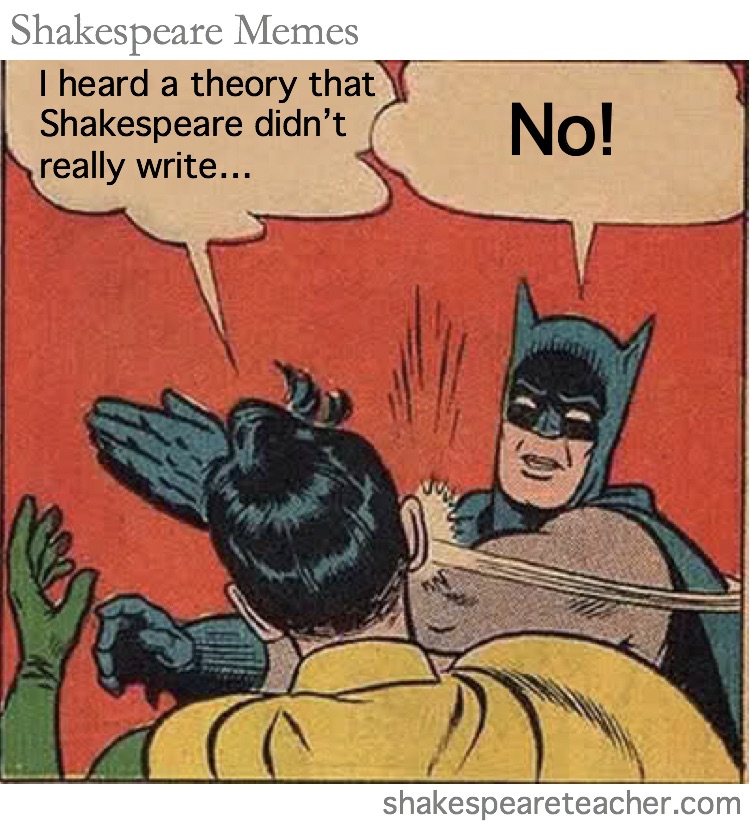
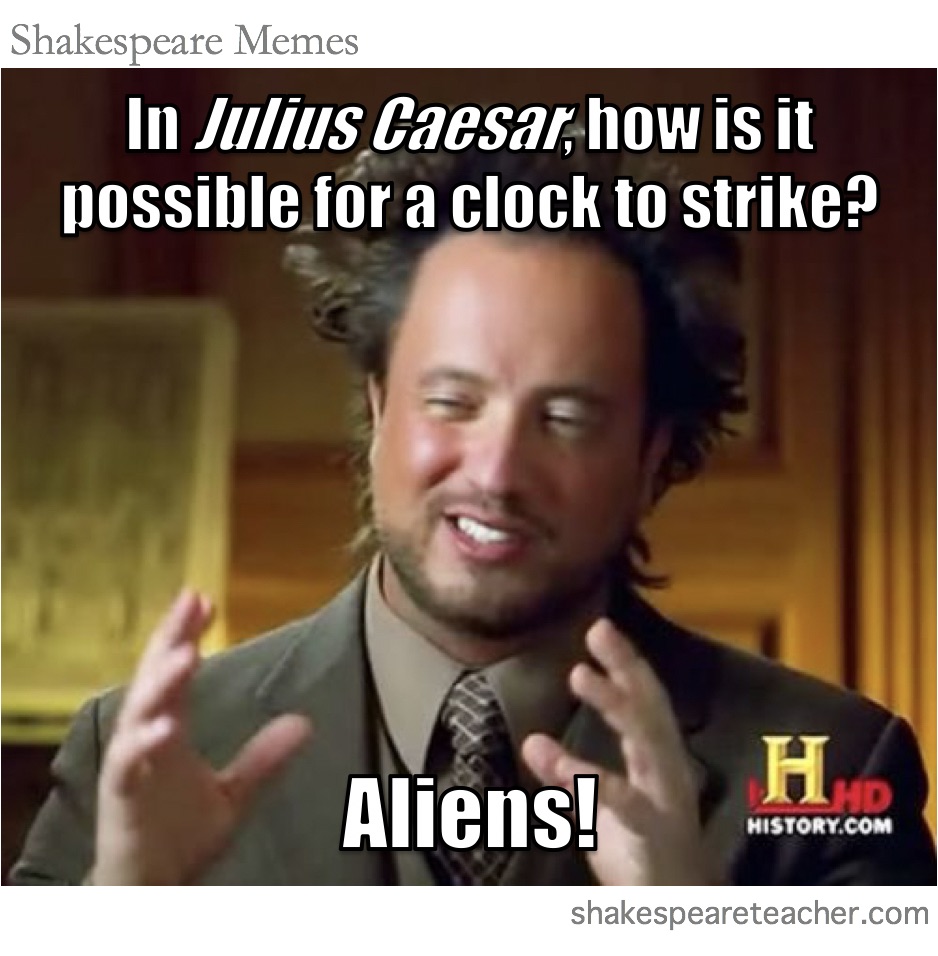
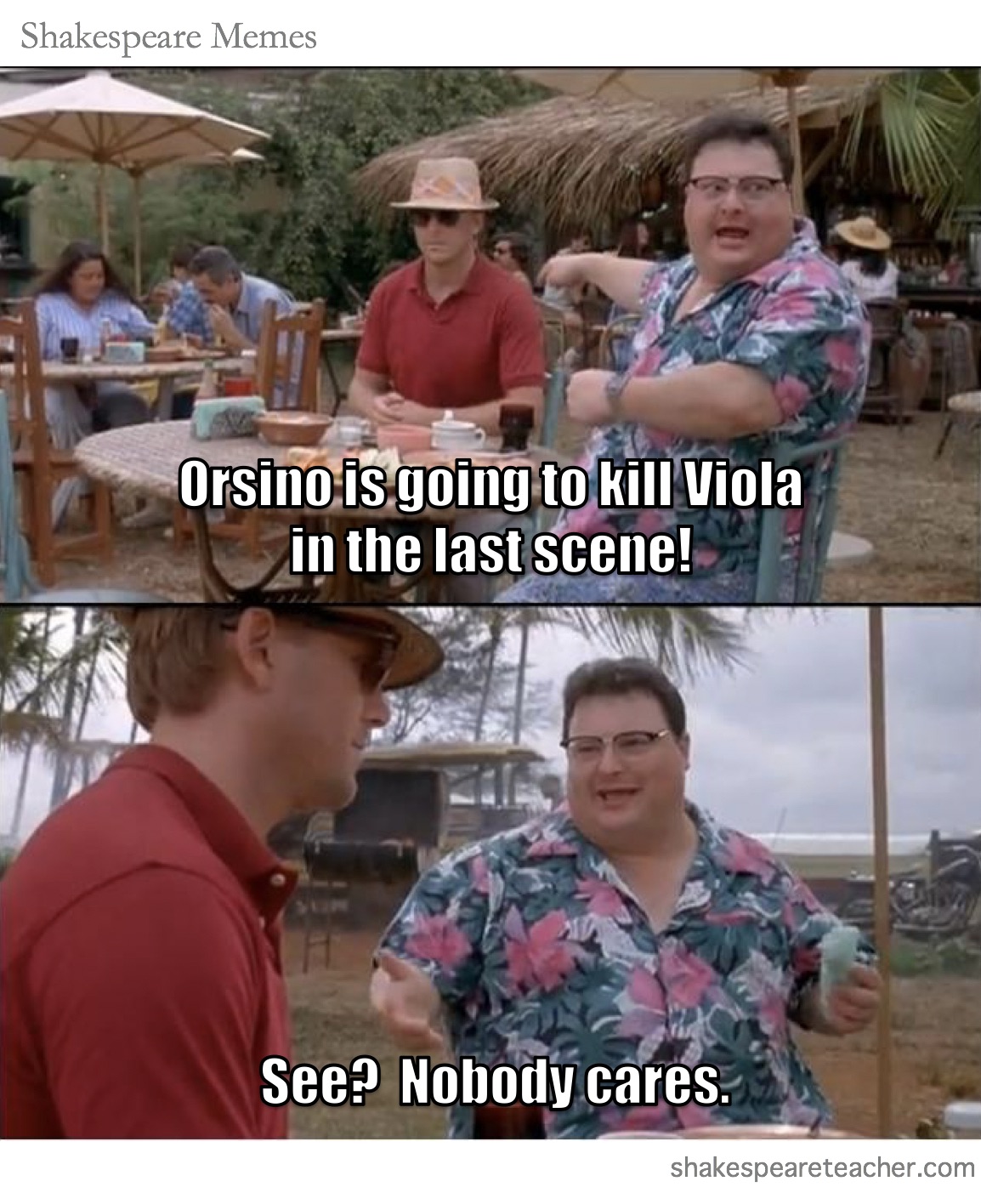
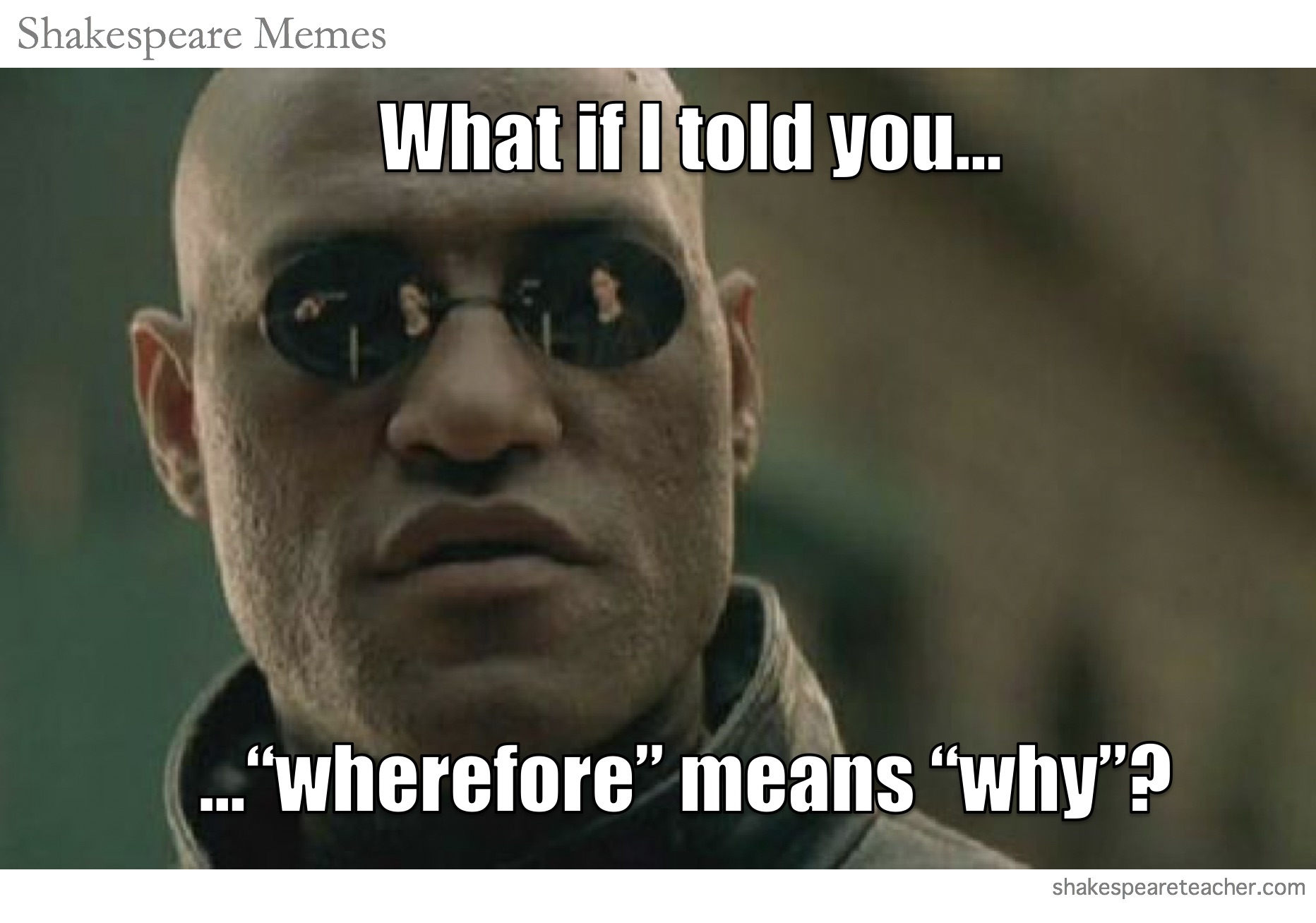
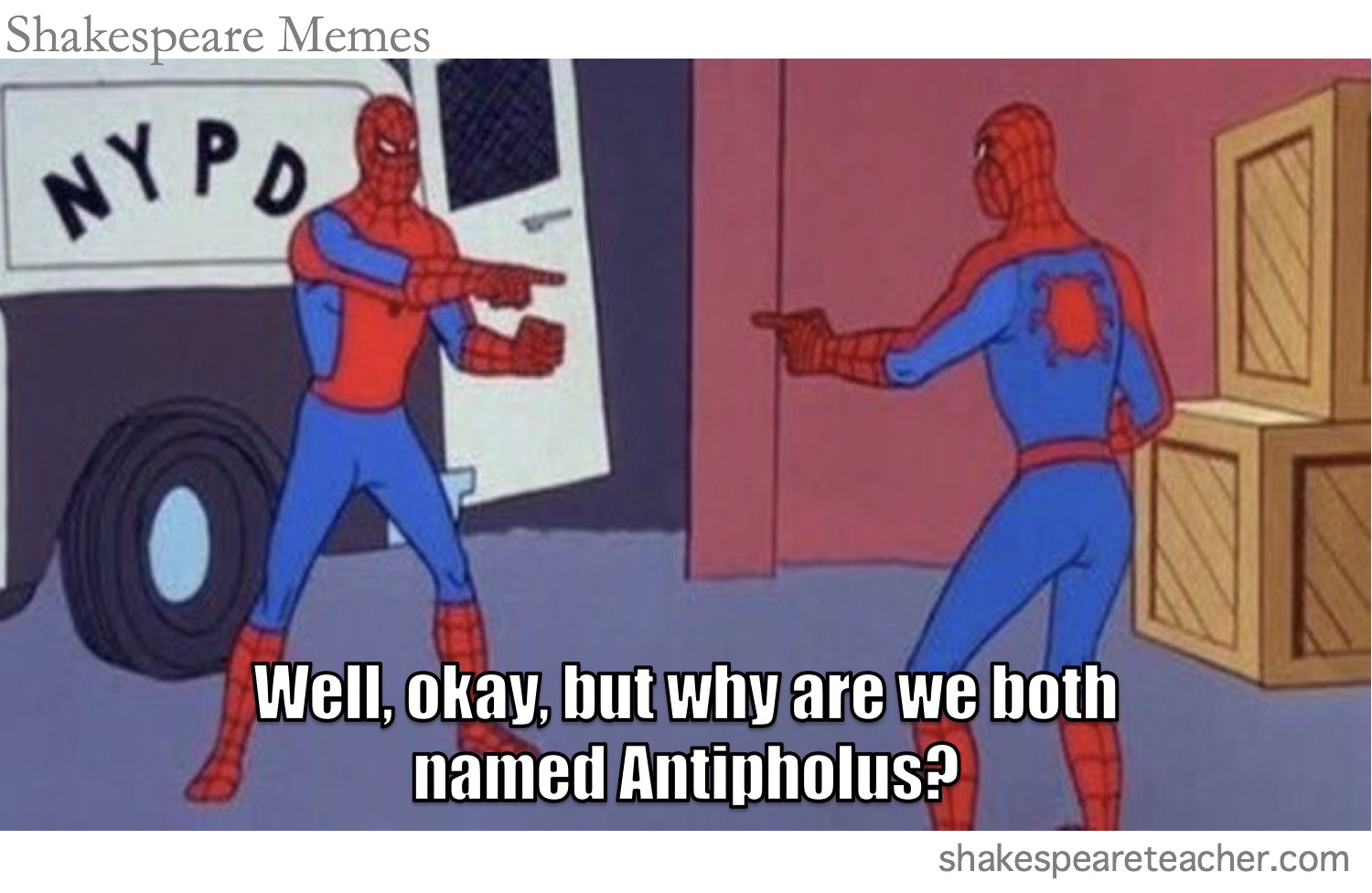
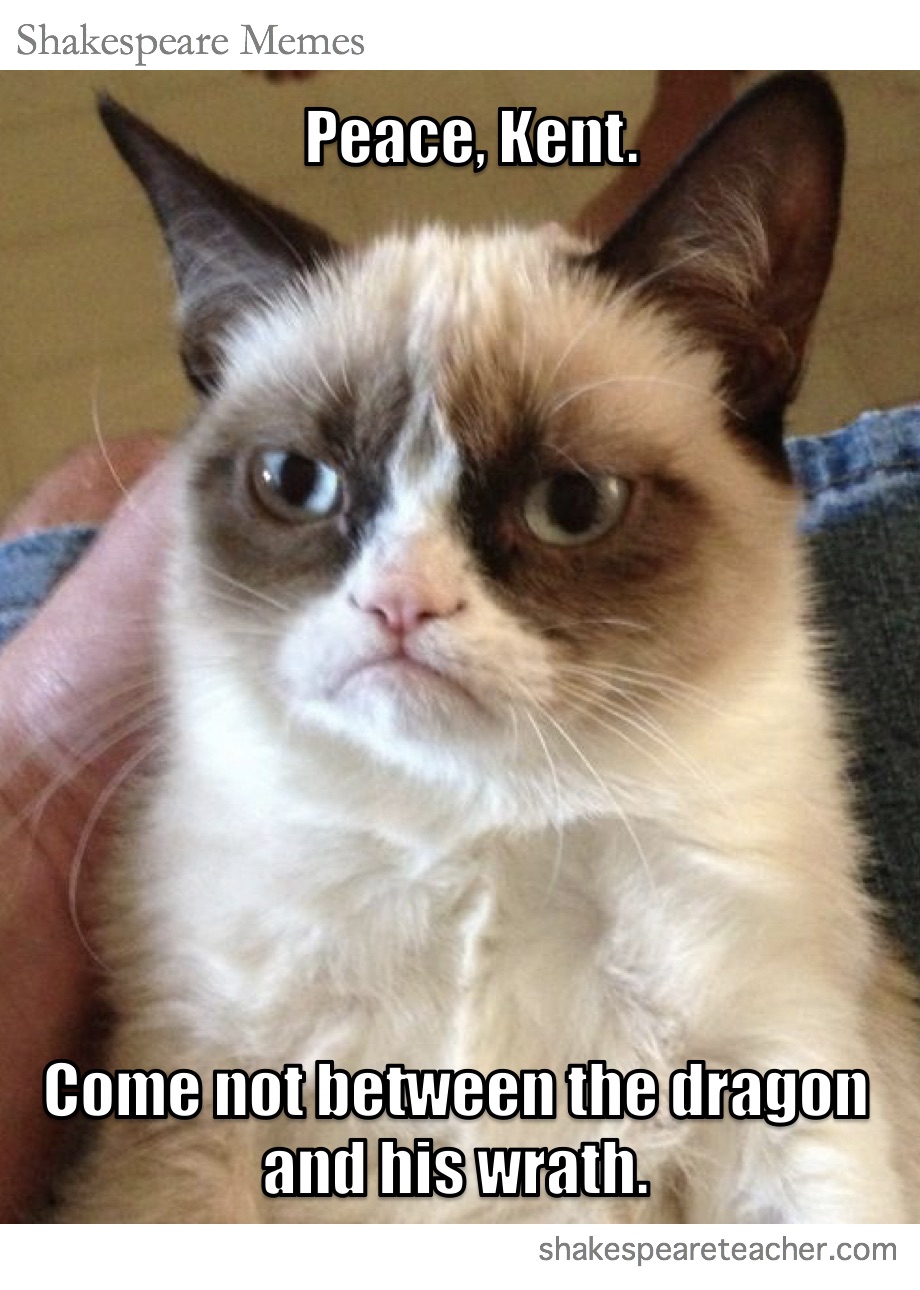
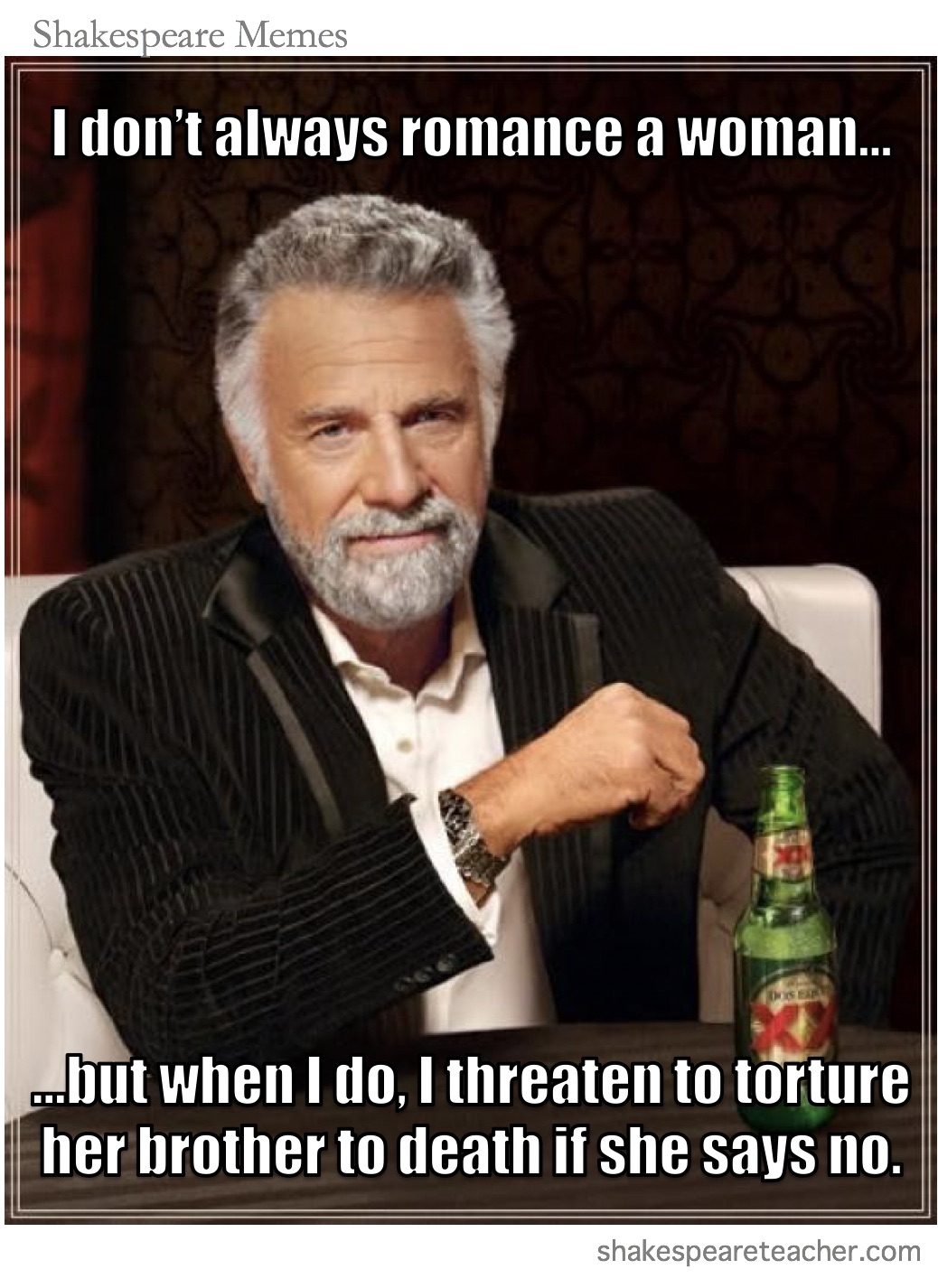
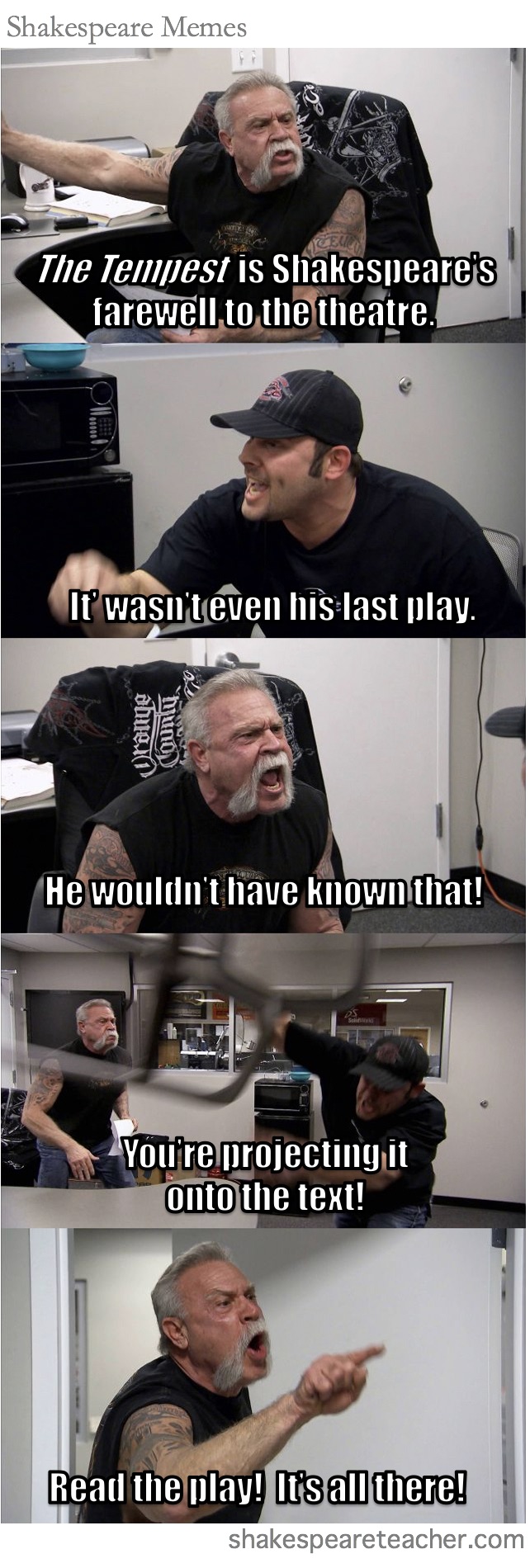
The activities on and off the ship have been keeping me pleasantly busy, but I did want to check in about our shore excursion yesterday. I’ve been traveling with my friend Richard (known to Shakespeare Teacher readers as Bronx Richie). Yesterday, our ship docked in Copenhagen, and we took the day to visit the city.
First, we went to the Tycho Brahe Planetarium. Brahe is a big deal here, and we enjoyed the science museum that bears his name. We also hit the National Museum of Denmark, which boasts a wide range of impressive artifacts from time periods across history, whether it was coins from the Bronze Age, medieval weapons, gold-plated clocks owned by kings, propaganda posters from the occupation, or memorabilia from when the Beatles visited in 1964. It was a lot of fun, and one of the highlights of the trip.
We also took in some of the sites that Copenhagen has to offer from Tivoli Gardens, an amusement park, to Nyhavn, a harbor-front row of coffee shops and restaurants where you can dine among the boats, musicians, and fellow tourists.
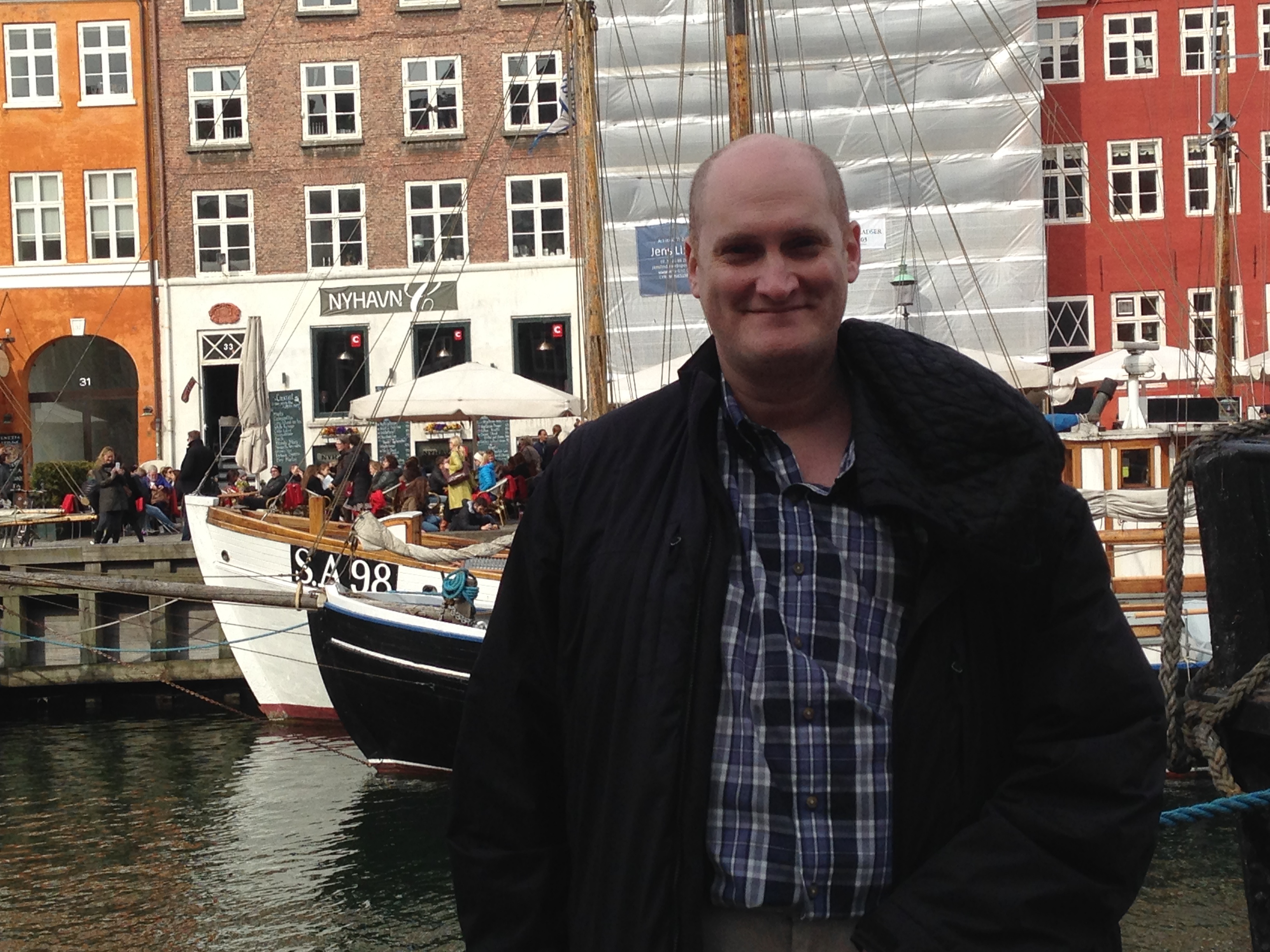
It’s hard to believe the trip will be ending soon. I’ve had months to look forward to it, and now it will be over in a few days. It’s a good reminder to make the most of what’s left. I’ll check back in when time allows.
Farvel for now!
Today I went to Kronborg Castle in Helsingor, the real-life inspiration for Shakespeare’s Elsinore.

Now, the castle itself, in all honesty, has very little to do with Shakespeare. First of all, Hamlet is fictional, so there’s no sense of this is where this happened or anything of the like. Also, Shakespeare never visited Denmark, so you can’t even say that this is the room where Shakespeare envisioned a certain scene or other. What’s more, the castle itself was based on a stronghold built in the 1420’s, and renovated into a Renaissance castle in the late 16th century. So, it wouldn’t even have existed during Hamlet’s time.
None of this matters, of course, when you visit the castle. Hamlet is real and this is where the events took place. You can see the bedchambers, the banquet tables, and the giant tapestries hanging in the hallways. This most excellent canopy hangs in my lady’s chamber, and you can breathe in the history, even if it never actually happened.
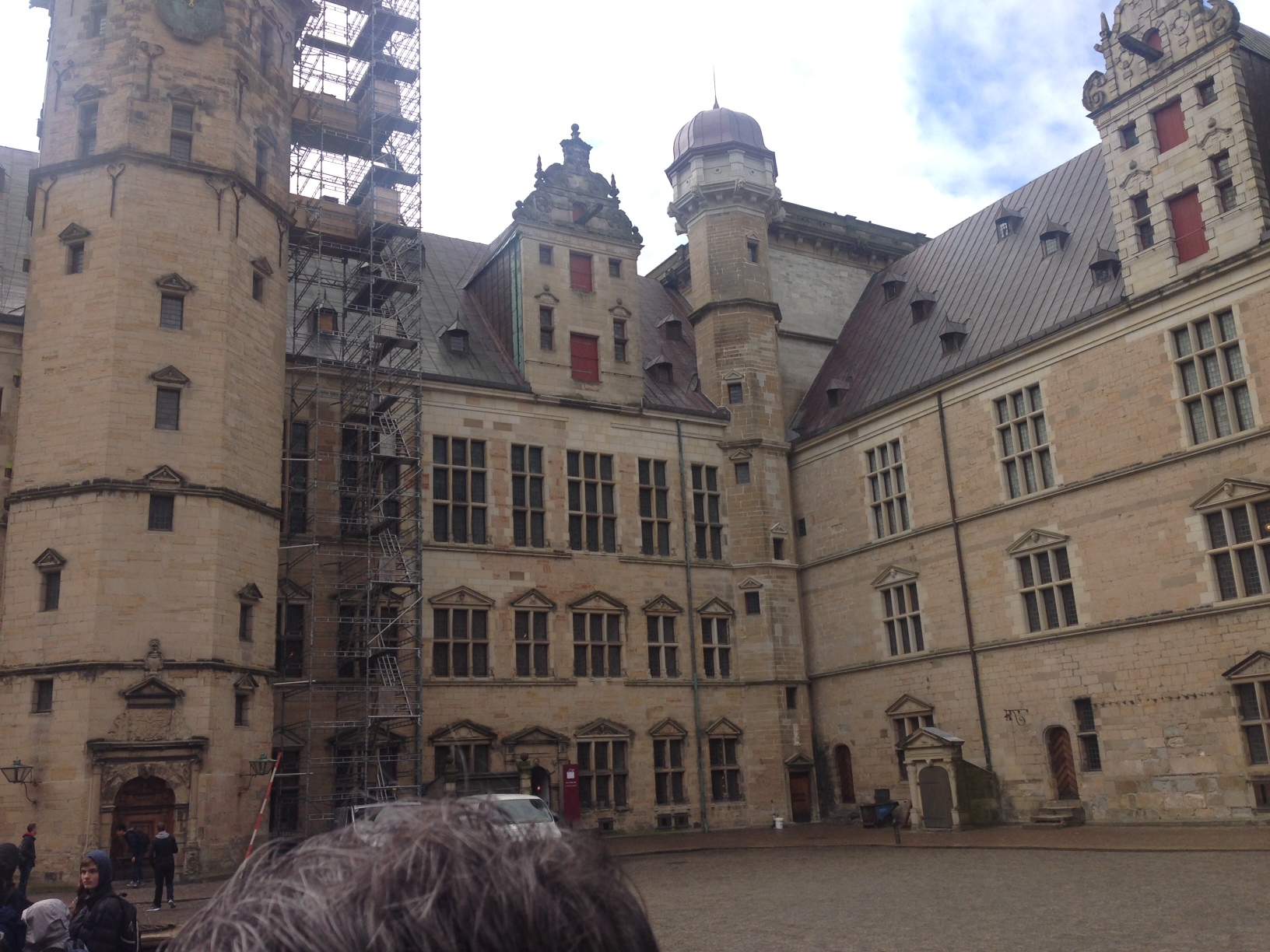
Shakespeare is celebrated in the castle quite a bit. There are performances of Hamlet given regularly at the castle, and there is even an exhibition of all of the various actors who have played Hamlet over the years. There is also an excellent gift shop where you can get the standard Shakespeare merchandise, but with an extra note of authenticity. Yes, it’s a mock-quill pen, but it’s from Elsinore. I say this without irony; I picked up an excellent coffee mug.
No doubt, when I look back on this trip, it will be the castle that stands out as the centerpiece of the experience. Next, we shall be welcomed back to Denmark as we visit Copenhagen.
My monthly Shakespeare reading group is gearing up to do the history plays. For the next eight months, starting this Sunday, we’re going to be working our way through the two tetralogies.
Shakespeare, working in the late sixteenth century, was writing about his own country’s history spanning most of the fifteenth century. He could assume his audience was familiar with the stories and the characters to some degree. Our perspective, over four hundred years later and in another country, does not provide the same level of context.
Imagine we were watching a play about the American Civil War and characters made various passing references to “the president,” “Lincoln,” and “Honest Abe.” We would understand these are all the same person, no explanation needed. But someone unfamiliar with our history might get confused. In Shakespeare’s histories, characters refer to each other by last name, nickname, and title interchangeably, and their iconic status in English memory requires very little exposition. When we do actually get a first name, it’s usually one of the same six or seven names recycled endlessly throughout the generations, relying again on context for specificity.
Thus, in order to facilitate the readings, I have created a family tree for the Plantagenets that spans all eight plays. For each play, I have put together a version of the tree that shows the current state of the family as the action begins. It shows who’s living, who’s dead, who’s related to whom, who is actually in the play, and what names might be used to reference them. What’s more, it all fits on one page, so it makes a convenient handout for a reading.
It was quite a project, but now that I’m finished, it’s my pleasure to share the results with the Shakespeare Teacher community:
Whether these charts end up providing more clarity or only more confusion will remain to be seen. I’ll be field testing them with my group and may find a need to do a rewrite in eight months time. If anyone out there sees anything seriously wrong or just has a helpful suggestion, please leave a note in the comments so I can address it in the next round of revisions.
A few notes may be helpful. A shaded box means that the character is dead before the play begins. A bold-faced box means that the character appears in the current play. Each space represents the same character across all eight plays, but there are two characters (Anne Mortimer and Isabella Neville) that are duplicated on the chart because they married across family lines. These are represented by circled numbers.
For the most part, Shakespeare sticks with history as far as the genealogy and chronology are concerned, but where he breaks with history, I generally went with Shakespeare’s version. I did this because the purpose of the chart was to make the readings easier. So if Shakespeare, for example, refers to a character by a title he technically didn’t have yet, I used that title on my chart.
One major exception to this is the case of Edmund Mortimer. Historically, there were two different men named Edmund Mortimer in this story: Sir Edmund Mortimer, and his nephew Edmund, Earl of March. An Edmund Mortimer appears in Henry IV, Part One and an Edmund Mortimer appears in Henry VI, Part One. It appears that Shakespeare has conflated the two men into a single character, as he ascribes to the character biographical details from both men in both plays. I went with the more historically appropriate choice to put Sir Edmund in 1H4 and the Earl of March in 1H6, but you should know that when using these charts with those plays.
A lot of the information in these charts were taken from the plays themselves. But the charts also include a lot of historical information, and for that, I used other sources. I took advantage of the excellent genealogical tables in The Riverside Shakespeare (G. Blakemore Evans, ed.) as well as the Arden editions of Henry V
(T.W. Craik, ed.) and Henry VI, Part Three
(John D. Cox and Eric Rasmussen, eds.). I found The Cambridge Companion to Shakespeare’s History Plays
(Michael Hattaway, ed.) very helpful. I also consulted the official website of the British Monarchy, as well as other online sources as needed.
Enjoy!
UPDATE: The Family Trees now have their own page on this site.
In The Comedy of Errors, Antipholus and Dromio of Syracuse, while visiting Ephesus, are quite surprised that two women have claimed them as husbands. In actuality, they are the wives of the Syracusians’ long-lost twins, but our travelers don’t know this. Dromio describes his new-found wife as spherical, like a globe. Antipholus asks where particular countries can be found, and Dromio makes bawdy wordplay based on various parts of her anatomy. At one point, Antipholus goes somewhere unexpected:
Where America, the Indies?
USA! USA! USA!
But, wait… Shakespeare wrote The Comedy of Errors in the late 16th century, over a hundred years before Thomas Jefferson was even a glimmer in his pappy’s eye. There was no USA. O, say can you see the need for a Shakespeare Follow-Up?
The 1492 expedition of Christopher Columbus introduced Europeans to what they would later refer to as “The New World.” But at the time, Columbus thought that he had circumnavigated the globe and found a new route to the Indies. Despite being in error about this, the islands he reached continue to be called the West Indies and the native people he encountered are still commonly referred to as Indians, though the latter title seems to be phasing out.
According to my Arden edition of the play (R.A. Foakes, ed.), Shakespeare wrote The Comedy of Errors around 1591-1592, give or take a couple of years. For our purposes here, it will suffice to note that the play was written after the first English colonists set up in the New World (the ill-fated Roanoke colonists, arriving July 4, 1584), but before the first permanent colony was established in Jamestown in 1607.
So what did Shakespeare mean by “America”? The Arden note is inconclusive: “the only specific reference to America in Shakespeare’s writings; here, like the ‘Indies’ named in reference to its proverbial wealth.” However, according the Folger’s Shakespeare in American Life website, Shakespeare’s characters would refer to the New World as “the Indies,” as it appears Antipholus is dong here. So my best inference would be that “America” also is referring to the New World in general, and not necessarily the middle section of the North American landmass.
Isaac Asimov, by the way, is silent on this issue. He does note that, during this section, Antipholus and Dromio have completely abandoned any pretense of being from ancient Greek city-states.
The Declaration of Independence was signed in Congress on this date, July 4, 1776, and today is commonly celebrated as the birthday of the United States of America. The word “America” is now most commonly used to refer to this nation.
So… Happy Birthday, America!
So, you want to teach your students about literary devices, but they’re too preoccupied with the music from Disney’s Frozen? If so, this post is for you.
The Frozen soundtrack is actually full of literary, poetic, and rhetorical devices that you can point out for students, or have them find for you. Join me as I throw open the gates of Arendelle so that I may unlock its secrets and exploit its riches. (Did I say that out loud?)
This song introduces a number of motifs in the movie, including ice, snow, and the heart (frozen or otherwise). The lyrics use vibrant imagery throughout, and help establish the Nordic setting of the movie. Within the lyrics, anaphora is used as a device (“strike for love and strike for fear”), and there is a string of bold adjectives that form an asyndeton (Beautiful! Powerful! Dangerous! Cold!).
It doesn’t have to be a snowman, because the snowman is a symbol for the bond between the sisters formed during childhood play. The song passes over long periods of time, forming an ellipsis. The lyrics make good use of alliteration, and there’s even an allusion to Joan of Arc. The lyrics say “Tick Tock,” which would be onomatopoeia, though in the movie, Anna clicks her tongue to simulate the sound.
The title is a great example of hyperbole, and the song foreshadows later events in that it explains why Anna is so quick to want to marry Hans. “Stuff some chocolate in my face” is metonymy. There is an intertextual moment when Anna passes Rapunzel from Disney’s Tangled. There is also a juxtaposition at the end when she sings that nothing’s in her way before running smack into a horse.
The title is a great example of a metaphor. “Can I just say something crazy?” is actually a rhetorical question. The lyrics make a lot of use of repetition, both with Anna and Hans repeating each other and themselves. But they also have shared lines. (The link is to the Macbeths finishing each other’s sandwiches at lines 21-24.) There is also some good Tier II vocabulary in this song, if you were looking for some.
The song can easily be taken as an allegory, but for what will vary by audience member. The lyrics are filled with antithesis and rhyme (both internal rhyme and end rhyme). There are also some clear similes in the text. “The cold never bothered me anyway” is litotes, a rhetorical understatement. Also… Damn, Idina Menzel can sing. That’s not a literary device or anything, but damn!
Kristof uses personification to sing Sven’s part of the song, though in the movie it is clear that Sven is completely aware that its his part and what the lyrics are going to be. The movie uses the song to characterize Kristof as being less comfortable around other people. The song itself is doggerel verse that uses polysyndeton and epistrophe (“people will beat you and curse you and cheat you”).
This is a perfect example of dramatic irony, in that the audience knows something that Olaf does not. A singing snowman is an example of anthropomorphism. The lyrics play around with oxymoron, and employ some puns. There is also an implied rhyme when Olaf says “happy snowman” when he clearly was going to say “puddle.” (The link is to a similar moment when Hamlet declines the rhyme “ass” at line 216.)
There is a lot of intratextuality here, not just with the callback to “For the First Time in Forever” but to several other songs in the soundtrack. The sisters sing in counterpoint, highlighting one of the movie’s central conflicts. The song begins with a flashback. And there is situational irony, as Elsa sends Anna away in an attempt to protect her, and in doing so, causes her a life-threatening injury.
The trolls employ an analogy in describing Kristof with a term of real-estate jargon, which is itself a euphemism. The list of Kristof’s faults is a form of proslepsis, as the trolls are listing faults they think Anna should overlook, while introducing new ones she might not be aware of. The song also highlights one of the major themes of the movie: that love has the power to heal each of us.
How far should we go to get people to read Shakespeare? I say we do whatever it takes.
You may also enjoy these stories:
Click the images above to read more!
My teenage daughter and her friends think that posts like this can’t go viral. Please help me teach them an important lesson by sharing this on Facebook and Twitter.
In a NYC Shakespeare season filled with a Macbeth here and a Midsummer there, with two productions of Romeo and Juliet running and another two Kings Lear on the horizon, it would be hard for a single production to stand out as the fairest of them all. Nevertheless, I was looking forward to seeing Mark Rylance play Richard III in the currently running production at the Belasco Theatre with a higher degree of anticipation than any of the others. Richard III is my favorite play, and I love Rylance as an actor. I first saw him about 20 years ago playing Henry V in New York and then Benedick in London shortly after. He and I may not agree on who wrote these words, but I’m always glad to hear him speak them.
My anticipation had some extra time to build, as the actors do their pre-show preparations in full view of the audience. Some audience members were seated on the stage, which evoked the feeling of the Globe. The actors changed into costumes from Shakespeare’s time (not Richard’s) and the musical entertainment seemed Elizabethan as well. So when the show began, and Richard’s opening monologue was given in a presentational style, it seemed to fit with the concept they were going for.
Once Rylance began his winter-of-our-discontenting, I was hit by a sense of deja vu, before realizing that I had seen Rylance give this speech before. He delivers the same monologue playing Burbage in Anonymous. But this was a very different delivery than the one he gave in the film. Here, Rylance delivers Richard’s speech in broadly comical tones and with full interaction of the audience. When we laughed at his lines, he’d stop and laugh along with us, appreciative that we found the humor. He chummed it up with the audience members in the on-stage rows. And he was having so much fun, that we almost forgot that he was about to set up his brother to be murdered.
Can you play Richard III as a comedy? Sure. Many of Richard’s antics, as written, are way over the top, and his chutzpah in several scenes is absolutely breathtaking. I think you have to laugh at some of the more outrageous moments. And the choice allowed Rylance to truly revel in the most delicious moments of Richard’s glory, which provides some of the fun of the play. Richard becomes a Puck figure, that trickster devil who tempts mortals to their doom for his own increase. The play does work on that level, and elements of it can be found in any production.
The problem is that if you only play it as a broad presentational comedy, then it becomes a different play, potentially a good play, but one vastly inferior to the one that Shakespeare wrote. Rylance plays a very jocular casual-sounding Richard, and it doesn’t work. It’s not like the natural-sounding language of Joss Whedon’s Much Ado, but rather a presentation of the play as a shared joke with the audience. So, Richard isn’t Richard, but an actor playing a role. In the beginning, he knows the plots he’s laid are going to work – it’s in the script – so he barely needs to put any effort into getting there. And so, the inductions are not so dangerous. Later in the play, when he knows he’s going to lose, the presentation of the lines is more serious, but the outcome is just as sure and there still are no stakes. We end up watching a pageant, and not a play. It is merely a shadow puppet production of Richard.
And this matters, because the fact that Shakespeare’s Richard finds his own cutthroat machinations so funny is part of the evil of his character. And when I watch a good production of this play, I have the experience of a charismatic villain seducing me with his charm by making me feel like I’m on the inside of a momentous historical moment. Shakespeare makes me root for the bad guy. Who do I get to root for in this production? An actor playing a role, mugging for the audience, and not really seeming to care about how the plot progresses? I end up rooting for intermission.
So we get a stammering, mumbling Richard, with his back to the audience half the time, throwing his lines away and uttering his best asides under his breath. Actors meander about the stage with no sense of purpose, and Richard himself seems like he’s barely paying attention.
It was an all-male cast, which put the actors playing women in a very tight spot. If they played up the humor too much, it would play as a drag show, but if they played their parts too seriously, they’d be mismatched with the lead. Instead, they all ended up playing a kind of introspective sadness that plays as feminine without being too Monty Python.
It was disappointing that so much effort went into the costumes, music, set, and marketing for the show, and so little attention was paid to the direction. But Tim Carroll’s flat production felt more like an amateur reading group or high school production than Shakespeare on Broadway. Put simply, the play was not well articulated, and that’s the worst thing I can say about a production.
On the positive side, the lines played for comedy were actually funny. Kurt Egyiawan was a standout doubling as the Duchess of York and Richmond. I liked the final fight concept, and the dance at the end. And I always enjoy hearing Shakespeare’s words spoken out loud. But none of these are enough for me to recommend this show to you.
The same company is concurrently performing Twelfth Night, and I actually have much higher hopes for that production. Rylance will be playing Olivia. Stephen Fry, grievously underused in this production as an audience member sitting five rows ahead of me, will be playing Malvolio. Some of the elements that didn’t work for me in this production may be better suited to that play. In fact, I kind of got the sense that it was Twelfth Night where all of the attention was focused, and Richard III was merely slapped together as an afterthought.
May I live in hope? Watch this space.